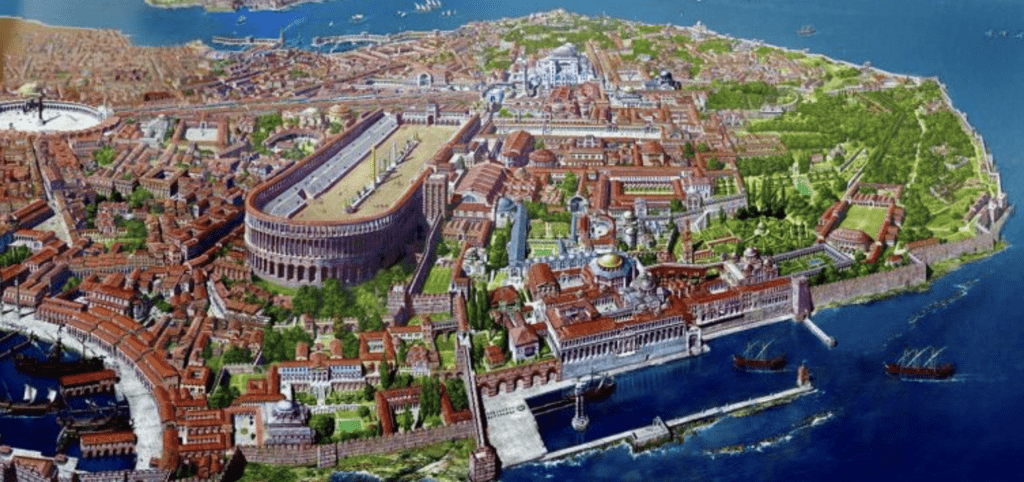Historically, Constantinople was the largest and wealthiest city in Europe from the 5th to early 13th century AD. To that end, it was Emperor Constantine who truly elevated the architectural ambit of the original settlement, by ‘re-founding’ it as Nova Roma (New Rome or Νέα Ῥώμη). This symbolic overture mirrored the entire shifting of the capital from original Rome to Byzantium in 330 AD, which was then called Konstantinoupolis (or city of Constantine).
In fact, the massive defense systems of the major Roman city was equally matched by its impressive architectural masterpieces, ranging from the magnificent Greek Orthodox cathedral of Hagia Sophia, the humongous Hippodrome of Constantinople (which was capable of possibly holding 100,000 spectators) to the Great Palace of Constantinople (or Palatium Magnum or Μέγα Παλάτιον) and the triumphal Golden Gate of the complex Land Walls. In reference to the flurry of these architectural and engineering credentials, Constantinople in itself was also called Roma Constantinopolitana, sometimes accompanied by prestigious titles such as Basileuousa (Queen of Cities) and Megalopolis (the Great City).
Inspired by the wealth of complex spatial elements, artist extraordinaire Antoine Helbert had painted an entire collection of illustrations that portray the historical scope of the last great Roman city in its hey-days from 4th to 13th century AD. His works, in his own words, cover the numerous plans, elevations, and sections of the major monuments of Constantinople that date from that extensive time-frame of 800 years.









